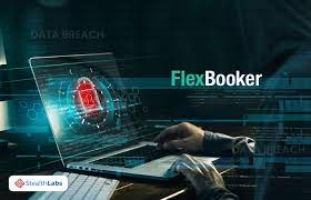Press Release
An ex-employee of a NY credit union destroys 21GB of data as retaliation

Former credit union worker Juliana Barile admitted to breaking into the company’s computer systems without permission and erasing over 21 terabytes of data as retaliation for being sacked.
Acting U.S. Attorney Jacquelyn M. Kasulis stated that Barile “removed mortgage loan applications and other sensitive material held on its file server” after secretly accessing the computer system of her former employer, a New York Credit Union.
Within 40 minutes, over 20,000 papers were deleted
Until May 19, 2021, when she was fired, the defendant allegedly worked remotely for the credit union as a part-time employee.
Barile’s credentials for remote access were left in place despite a request from a credit union staffer to the bank’s IT support company. On May 21, two days later, Barile checked in for about 40 minutes.
During that period, the defendant removed about 20,000 files and around 3,500 directories, totaling about 21.3 gigabytes of information from the bank’s shared drive.
Files pertaining to customers’ mortgage loan applications and the financial institution’s anti-ransomware defence programme were deleted.
Barile opened several private Word documents, including files holding the credit union’s board minutes, in addition to deleting papers containing consumer and business information.
They didn’t cancel my access so I erased p drift lol. Five days later, on May 26, she also revealed to a pal via text messages how she was able to obliterate thousands of documents on her former employer’s servers. I removed their shared network papers from the system.
The New York credit union had backups of some of the material that the defendant had erased, but after Barile’s unauthorised intrusion, it still cost more than $10,000 to restore the lost data.
The FBI Assistant Director-in-Charge Driscoll continued, “Ms. Barile may have felt she was getting even with her employer by destroying files, but she inflicted just as much harm to customers.”
“Her small-scale retaliation not only put the bank at great danger for security, but it also caused chaos for consumers whose mortgage payments depended on paperwork and permissions.
“An inner threat can cause just as much destruction as an outside criminal, if not more. Now, the bank and its clients must deal with the enormous headache of one employee’s selfish behaviour.
Press Release
Microsoft fumbles supply chain and acknowledges signing rootkit malware.

As of right now, Microsoft has admitted to signing a malicious driver that is disseminated in gaming contexts.
This “Netfilter”-named driver is actually a rootkit that has been seen interacting with Chinese C2 IP addresses.
Last week, the whole infosec. community joined G Data malware specialist Karsten Hahn in tracking down and analysing the malicious drivers that bore the Microsoft logo.
This incident exposed vulnerabilities to software supply-chain security once more, but this time it was caused by a flaw in the code-signing procedure used by Microsoft.
Rootkit “Netfilter” driver is Microsoft-signed.
A Microsoft signed driver dubbed “Netfilter” was detected last week by G Data’s cybersecurity alert systems as what at first glance appeared to be a false positive, but wasn’t.
The driver in question was observed interacting with C&C IPs based in China, which had no valid functionality and raised red flags.
This is when Karsten Hahn, a malware analyst at G Data, disclosed this publicly and contacted Microsoft at the same time:
Since Windows Vista, all code that operates in kernel mode must be tested and certified before being made available to the public in order to maintain the stability of the operating system.
According to Hahn, “Drivers without a Microsoft certificate cannot be deployed by default.”
At that time, BleepingComputer started tracking C2 URL behaviour and approached Microsoft for a comment.
A list of further routes (URLs), denoted by the pipe (“|”) symbol, are returned by the first C2 URL:
Each of these, in Hahn’s opinion, has a function:
The URL that ends in “/p” refers to proxy settings, “/s” offers encoded redirection IPs, “/h?” is for getting CPU-ID, “/c” offered a root certificate, and “/v?” refers to the malware’s self-updating capabilities.
For instance, as observed by BleepingComputer, the malicious Netfilter driver in question (residing at “/d3”) was accessible via the “/v?” path at the following URL:
After thoroughly examining the driver, the G Data researcher came to the conclusion that it was malware.
In a thorough blog post, the researcher examined the driver, its ability to self-update, and Indicators of Compromise (IOCs).
According to Hahn, the sample features a self-update routine that transmits its own MD5 hash to the server via the URL hxxp:/110.42.4.180:2081/v?v=6&m=.
An illustration of a request would be as follows:
hxxp:/110.42.4.180:2081/v?v=6&m=921fa8a5442e9bf3fe727e770cded4ab
“The server then replies with either ‘OK’ if the sample is current or the URL for the most recent sample, such as hxxp:/110.42.4.180:2081/d6. As a result, the malware replaces its own file “further information from the researcher
Other malware specialists like Johann Aydinbas, Takahiro Haruyama, and Florian Roth worked with Hahn during his analysis.
Roth has offered YARA rules for recognising them in your network environments after being able to compile the list of samples in a spreadsheet.
Microsoft is looking at a bad actor who spreads harmful drivers inside of gaming environments.
“In order to be certified by the Windows Hardware Compatibility Program, the actor supplied drivers. A third party created the drivers.”
Microsoft stated yesterday, “We have stopped the account and checked their uploads for additional indicators of malware.”
Microsoft claims that the threat actor primarily targeted the gaming industry in China with these malicious drivers and that there is currently no evidence that enterprise environments have been impacted.
Microsoft is waiting before blaming nation-state actors for this incident.
Sophisticated threat actors may take advantage of falsely signed binaries to help launch extensive software supply-chain attacks.
A well-known event in which code-signing certificates were taken from Realtek and JMicron to assist the comprehensive Stuxnet attack on Iran’s nuclear programme.
However, this specific instance has shown flaws in a reliable code-signing procedure, which threat actors have exploited to obtain Microsoft-signed code without jeopardising any certifications.
Press Release
FlexBooker reports a data breach, affecting more than 3.7 million accounts.

In an attack just before the holidays, the accounts of over three million customers of the American appointment scheduling service FlexBooker were taken, and they are now being exchanged on hacker forums.
The same hackers are also selling databases they claim to be from two other organisations: the Australian case management system rediCASE and the racing media outlet Racing.com.
Holiday breaches before
A few days before Christmas, there were supposedly three breaches, and the intruder posted the information on a hacking forum.
A popular programme for booking appointments and syncing employee calendars, FlexBooker, appears to be the source of the most recent data dump.
Owners of any company that needs to plan appointments, such as accountants, barbers, doctors, mechanics, lawyers, dentists, gyms, salons, therapists, trainers, spas, and the list goes on, are among FlexBooker’s clients.
The group claiming responsibility for the attack appears to go by the name of Uawrongteam, and they published links to files and archives containing personal information, including pictures, driver’s licences, and other IDs.
The database, according to Uawrongteam, has a table with 10 million lines of client data, including everything from payment forms and charges to pictures taken for driver’s licences.
Names, emails, phone numbers, password salt, and hashed passwords are among the database’s “juicy columns,” according to the actor.
Customers of FlexBooker have received a data breach notification that confirms the attack and that data on the service’s Amazon cloud storage system was “accessed and downloaded” by the intruders.
The letter states that “our account on Amazon’s AWS servers was compromised on December 23, 2021, starting at 4:05 PM EST,” adding that the attackers did not obtain “any credit card or other payment card information.”
FlexBooker advised consumers to be on the lookout for strange or fraudulent activities, and to monitor account statements and credit reports.
For further information, the developer also directed users to a report on a distributed denial-of-service (DDoS) attack. It was then determined that some customers’ personal information had been obtained by the hackers.
The FlexBooker assault exposed email addresses, names, partial credit card information, passwords, and phone numbers for more than 3.7 million users, according to the data breach reporting service Have I Been Pwned.
Prior to FlexBooker, the threat actor known as Uawrongteam distributed links to material that was purportedly taken from Racing.com, a digital television station that broadcasts horse racing and offers news, stats, and event calendars associated with the sport.
The data from the Redbourne Gang’s rediCASE Case Management Software, which is utilised by numerous enterprises in addition to health and community agencies, looks to be another target of the same group.
Press Release
The New York Times reports that investigators are investigating whether solarwinds has been hacked via offices in Czech, Polish, and Belorussia, where many of the company’s engineering has taken place (NEW YORK TIMES).

Sources: investigators are checking if SolarWinds was hacked via its offices in Czechia, Poland, and Belarus, where the company moved much of its engineering — Those behind the widespread intrusion into government and corporate networks exploited seams in U.S. defenses and gave away nothing to American monitoring of their systems.
-

 Apps1 year ago
Apps1 year agoWhy is Everyone Talking About Hindi Keyboards?
-

 Social Media1 year ago
Social Media1 year agoWho is Rouba Saadeh?
-

 Apps1 year ago
Apps1 year agoThings you need to know about Marathi keyboard today
-

 Apps1 year ago
Apps1 year agoStuck with Your default Bangla keyboard? Isn’t it time for a change?
-

 Games1 year ago
Games1 year agoTop 7 Popular Puzzle and Card Games for Relaxing Your Brain on Mobile, Featuring Solitaire
-

 Social Media1 year ago
Social Media1 year agoMati Marroni Instagram Wiki (Model’s Age, Net Worth, Body Measurements, Marriage)
-

 Entertainment1 year ago
Entertainment1 year ago12 Online Streaming Sites that Serve as Best Alternatives to CouchTuner
-

 Entertainment1 year ago
Entertainment1 year agoMovierulz Website: Movierulzz 2021 Latest Movies on Movierulz.com
